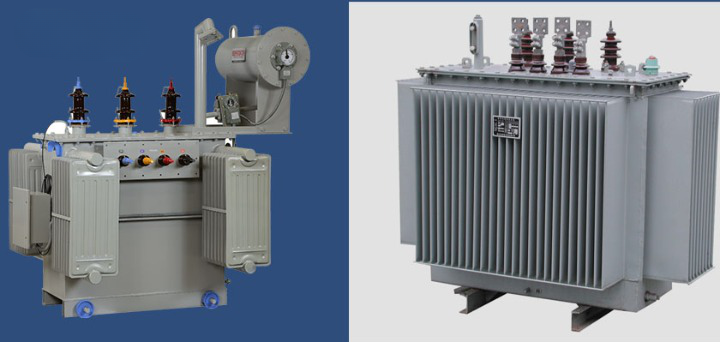This article describes the difference between a power transformer & distribution transformer. Power transformers and Distribution transformers are widely used in power systems for step-up and step-down voltage in transmission and distribution applications.
What is Power Transformer?
The voltage at the generating station is stepped up by a transformer for long-distance transmission to reduce line losses. The voltage is stepped down to the utilization voltage level at the receiving end. The transformer used for this application is known as a power transformer.
Power transformers rated more than 200 MVA are used at 400 kV, 220 kV,132 kV,66 kV, and 33 kV, classified in the category of the power transformer. The power transformer acts as a step-up and step-down transformer at sending and receiving ends.
What is Distribution Transformer?
Distribution transformers are used at lower voltage ratings to utilize the voltage at end-use. The distribution transformers are less than 200 MVA capacity in the voltage grade of 11 kV,6.6 kV, 3.3 kV,0.440 kV, and 230 V.
The secondary voltage tends to be lower, and the end-user uses the secondary voltage.
Basis of Differentiation between Power Transformer & Distribution Transformer
We can differentiate the power transformer and distribution transformer on the following basis.
Size of Transformer
Power transformers are large-rating transformers of higher voltage grade (>200MVA, 400KV); therefore, the size of the transformer is bigger than the distribution transformer.
Insulation level
Power transformers have higher voltage grades, 400 kV, 220 kV, etc. therefore, more insulation is required. The transformer is generally of outdoor duty, and the insulation level is kept high to withstand lightning impulses. Distribution transformers have less insulation requirement because the voltage grades of the transformer are below 33 kV.
Efficiency
Power transformers are supposed to be operated at full load and designed for 100 % efficiency. The efficiency of the transformer is calculated by measuring the ratio of the power output to the power input. The loading on the distribution transformer varies daily, and its efficiency is about 50 -70 %. The efficiency of the distribution transformer is calculated on an all-day basis.
Iron Losses & Copper Losses
Power transformers operate at 100 % loading for 24 hours. Therefore, the copper loss of the transformer should be as minimum as possible to have maximum efficiency. Power transformers are designed to operate at the maximum flux density. The flux density of the power transformer is kept between 1.7- 1.8 Tesla. The higher flux density causes higher core losses, and subsequently, on account of higher flux density, fewer turns are required; hence copper loss of the transformer gets reduced at 100 % loading.
The distribution transformer operates all day, and loading on the transformer is not constant. Therefore, the distribution transformer is designed to operate at a lower flux density to have low iron losses. The distribution transformer is designed for 60-70 % average loading. The trade-off between iron loss and copper loss is made to have the best efficiency of the distribution transformer.


